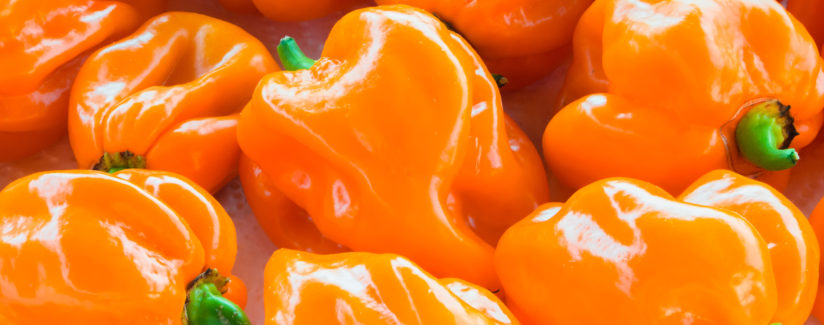
Is it Possible to Take the Heat out of the Habanero?
04/11/2017
Chili pepper lovers who naturally associate “habanero” with intense heat might want to change their thinking. There’s a relatively new pepper on the market that provides the sweet, melon-like flavor of the habanero without the fiery aftertaste.
It’s called the Habanada and is the creation of Cornell University plant breeder Michael Mazourek, who developed the pepper as part of his doctorate research. According to an article at the Cornell website, Mazourek wondered, “what if there was a pepper I could share with my friends who didn’t like hot peppers so they could taste what I love without the heat?”
The Scoville Scale measures levels of capsaicin, the chemical that causes a pepper’s burning sensation. A breed of pepper called Carolina Reaper, touted as the hottest pepper in the world, registers over 2 million units. Police-grade pepper spray measures 5.3 million units. A traditional habanero can hit the 300,000-unit level while the Habanada would be more like a traditional Bell Pepper with a score of zero.
Nearly a decade after Mazourek produced his first Habanada, the peppers aren’t yet readily available at grocery stores, but top chefs across the country give the pepper rave reviews. They’re becoming increasingly popular at farmers’ markets and seeds are available online for backyard gardeners. A review at one seed company’s website said, “It has the amazing sweet, melon-like flavor that you have almost forgotten a habanero has. But the minute you try (the Habanado), you immediately recognize it and prepare for the immense heat that you instinctively know is about to be unleashed, but … it never comes. Bravo!”
Mazourk uses traditional plant breeding – the art and science of changing the traits of plants in order to produce desired characteristics. One major technique of plant breeding is “selection” – the process of selectively propagating plants with desirable characteristics and eliminating or “culling” those with less desirable characteristics.
Few fresh fruits and vegetables are produced using genetic engineering, although that is changing. Since fruits and vegetables are not as widely grown as crops such as corn and soybeans, seed companies have not been as motivated to deal with the difficult and expensive safety tests and federal regulatory process required to approve a GMO for the consuming public.
There are exceptions as virus-resistant papaya, plum and squash, pest-resistant sweet corn and non-browning apples and potatoes are among genetically-engineered items that are nearing the marketplace. Read more about how technology helps crops grow here.

























